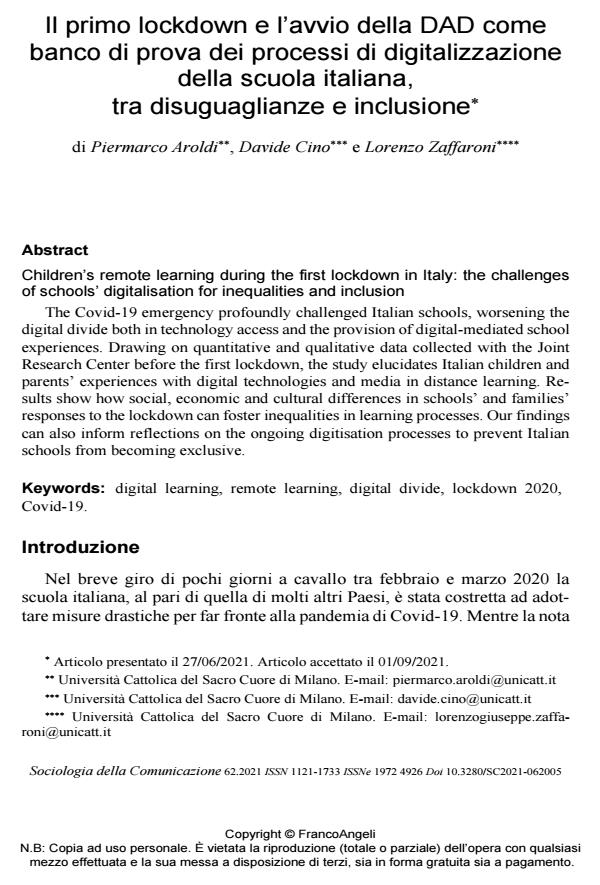Children’s remote learning during the first lockdown in Italy: the challenges of schools’ digitalisation for inequalities and inclusion
Journal title SOCIOLOGIA DELLA COMUNICAZIONE
Author/s Piermarco Aroldi, Davide Cino, Lorenzo Zaffaroni
Publishing Year 2021 Issue 2021/62
Language Italian Pages 18 P. 69-86 File size 295 KB
DOI 10.3280/SC2021-062005
DOI is like a bar code for intellectual property: to have more infomation
click here
Below, you can see the article first page
If you want to buy this article in PDF format, you can do it, following the instructions to buy download credits

FrancoAngeli is member of Publishers International Linking Association, Inc (PILA), a not-for-profit association which run the CrossRef service enabling links to and from online scholarly content.
The Covid-19 emergency profoundly challenged Italian schools, worsening the digital divide both in technology access and the provision of digital-mediated school experiences. Drawing on quantitative and qualitative data collected with the Joint Research Center before the first lockdown, the study elucidates Italian children and parents’ experiences with digital technologies and media in distance learning. Results show how social, economic and cultural differences in schools’ and families’ responses to the lockdown can foster inequalities in learning process-es. Our findings can also inform reflections on the ongoing digitisation processes to prevent Italian schools from becoming exclusive.
Keywords: digital learning, remote learning, digital divide, lockdown 2020, Covid-19
- La ricalibratura delle policy sull’ICT nella scuola italiana: “lezioni” dalla DaD Domenico Carbone, Cristina Calvi, Anna Rosa Favretto, in Cambio. Rivista sulle Trasformazioni Sociali /2024 pp.123
DOI: 10.36253/cambio-15541
Piermarco Aroldi, Davide Cino, Lorenzo Zaffaroni, Il primo lockdown e l’avvio della DAD come banco di prova dei processi di digitalizzazione della scuola italiana, tra disuguaglianze e inclusione in "SOCIOLOGIA DELLA COMUNICAZIONE " 62/2021, pp 69-86, DOI: 10.3280/SC2021-062005